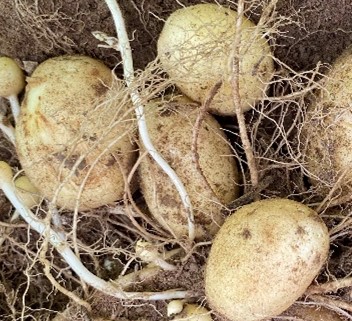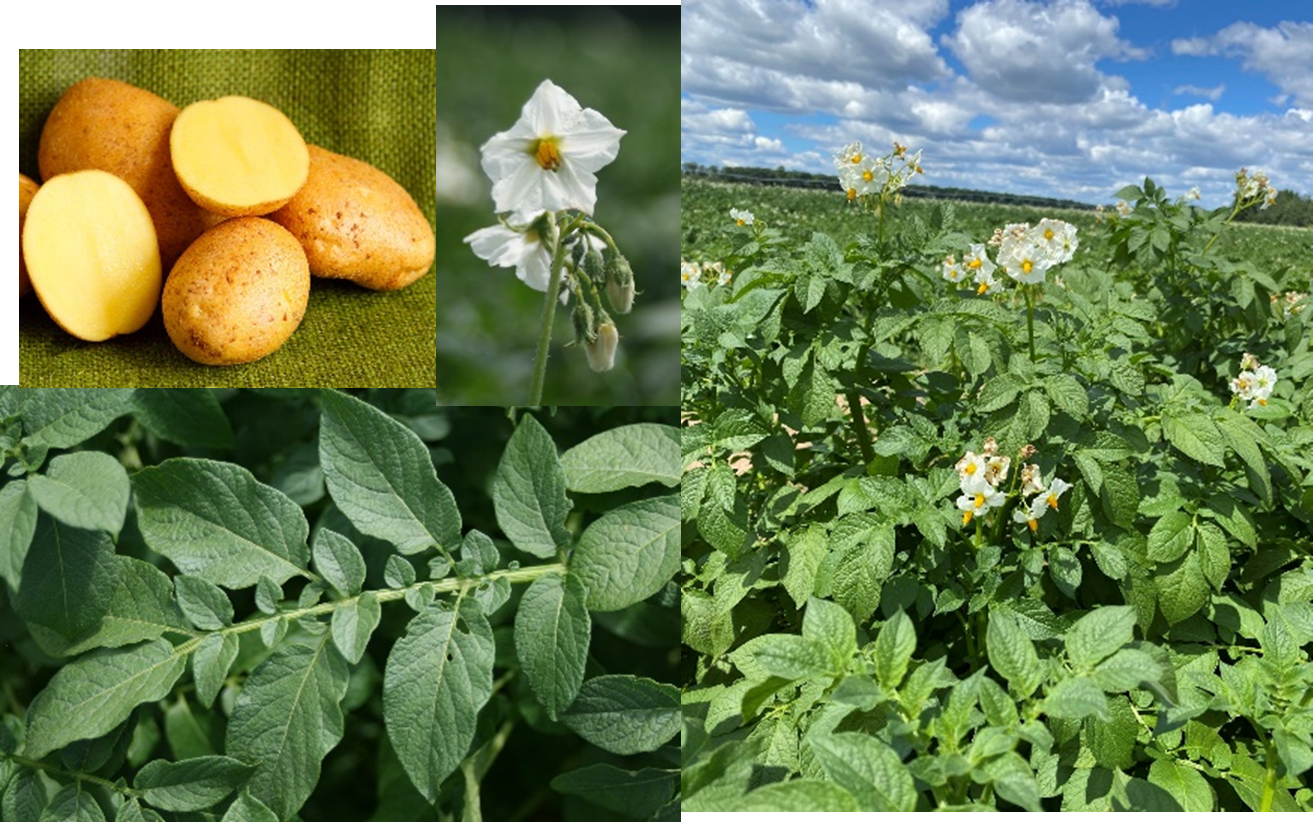German Butterball fact Sheet

| German Butterball (GBB) |
 |
Parentage – Unknown
Breeder – Introduced by David Ronniger, Ronniger Potato Farm, Moyie Springs, ID in 19883
Maturity – Late; 95-135 days1, 2
Usage – All purpose-steaming, baking, frying, and mashing, tubers hold together when cooked until tender1 ,2, 3
Plant – Large, upright vigorous plants4
Leaves – Medium size, green, ovate with acuminate tips; three to four primary leaflets pairs7
Flowers – Large, white with orange-yellow anthers4,6,7
Tubers – Medium size, oval, golden, netted yellow skin with shallow eyes; butter-yellow flesh1,3
Strengths – High tuber set; resistant to scab4; store well; have a buttery flavor1, 2, 4
Weaknesses – Susceptible to rhizoctonia (black scurf)4, early blight, late blight, fusarium wilt and Verticillium wilt2

Pictures4, 6, 7
References: 1Shepherd, Renee. Heirloom German Butterball. Renee’s Garden, 2022. 2Duford, Mary Jane. German Butterball Potatoes: A Guide To Planting, Growing, Harvesting, & Recipes. Home for the Harvest, 2022. 3German Butterball Potatoes. Specialty Produce, 2021. 4LaCourse, Roseanna. German Butterball. The Maine Potato Lady, 2022. 5German Butterball Potato. Filaree Farm, 2022. 6Justin Bula- Northern Sand Farms. 7WI Seed Potato Cert. Program
Page 1 of 1
Last Revised: 8/24/22
© 2019 The Board of Regents of the University of Wisconsin System
This article was posted in Fact Sheet.